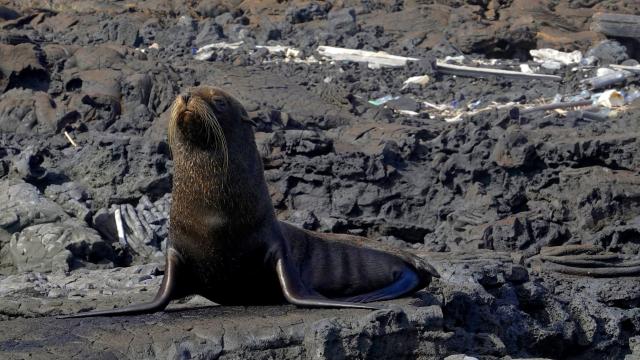A new study, published on Friday in Science, found that 18 per cent of marine megafauna may go extinct within the next century if current trends continue. That includes charismatic ones like whales, sharks, sea turtles, polar bears, and emperor penguins. But it’s not just sad because many of those animals are icons. It’s also bad news for ocean habitats as a whole.
Marine megafauna, which the researchers define as large-bodied organisms which have a body mass of at least 45 kilograms (about 100 pounds) that inhabit oceans and coasts, play important roles in marine ecosystems. Because they eat smaller organisms, they help regulate those species’ populations. Some of them, like whales and sharks, also serve as important carbon sinks. Even their poop is important by providing nutrients that boost the growth plankton at the base of the food chain.
The scientists measured the ecological functions of 334 marine megafauna in an attempt to untangle these relationships. They discovered that the dugong, green sea turtle, and giant clam were the three creatures that are the most “functionally unique,” meaning they fill the most ecological roles that other creatures cannot.
[referenced url=” thumb=” title=” excerpt=”]
Right now, the International Union for Conservation of Nature’s (IUCN) shows that a full one-third of all marine megafauna are at risk of extinction. The researchers used those listings as a jumping off point, modelling what would happen if the species projected to go extinct in the next 100 years actually disappear.
All told, the researchers found that if 18 per cent of the megafauna they looked at go extinct, ocean ecosystems’ functional richness (a measure of the variety of ecological needs met) could be reduced by about 11 per cent. And that’s not even the worst case scenario. If all of the species on IUCN’s list go extinct, marine ecosystems’ functional richness could diminish by up to 48 per cent globally, and up to 70 per cent in the Arctic and around Antarctica.
Because these animals have so many and such diverse ecological roles, Catalina Pimiento, a biologist at Swansea University and the lead researcher on the study, said this would have “catastrophic effects in marine systems.”
“Losing predators that sit at the top of food chains can cause massive collapses in ecosystems,” she told Earther in an email.
Studies show that the loss of the sea otter in some parts of the Pacific Ocean, for instance, caused populations of herbivorous sea urchins to explode, which had a devastating effect on kelp forests. And the bumphead parrotfish, for instance, is “uniquely able to chomp vast amounts of dead coral skeleton in the process of feeding on algae, so it generates huge amounts of sand that ultimately end up on beaches,” said Pimiento. Without them, creatures that live on sand would be under serious threat, showing the damage would extend far beyond the seas themselves.
“The loss of varied ecological functions will therefore have consequences throughout marine ecosystems,” she said. “It will also make the oceans—and the world—a less interesting, inspiring and spectacular place.”
It’s not too late to take action. Only a few marine megafauna species have gone extinct so far and many can be saved. But the time to act is now: we need to draw down carbon emissions and pollution and restore our marine ecosystems as fast as we can.
